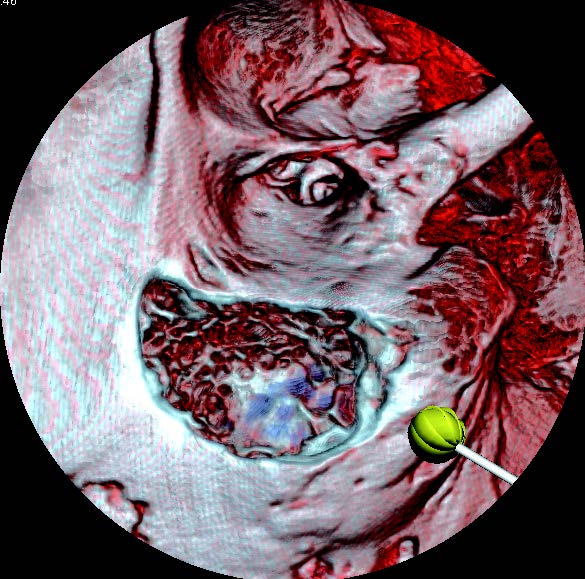This innovative virtual simulation tool offers a safer, more cost-effective way to teach surgery skills for treating hearing loss, vertigo, infection, or tumors.
Gregory J. Wiet, M.D., a pediatric otolaryngologist, head and neck surgeon at Columbus Children’s Hospital, and experts at the Ohio Supercomputer Center developed a virtual simulation tool that teaches medical residents temporal bone surgery.
Located in the lower part of the skull, the temporal bone encompasses the bones and structures of the ear. Doctors might perform surgery here to implant cochlear implants or hearing aids, treat chronic ear infections, or conduct exploratory surgery.
OSC programmers created an interface system that emulates the multi-sensory environment of the dissection lab. A binocular viewer replicates the view a surgeon would see through a microscope during surgery, and a drill-shaped device creates the pressure and resistance a doctor feels during the surgery. The program generates the sounds of a temporal bone drill.
The system can provide an open-ended dissection of the virtual temporal bone, assist with identifying critical structures through an intelligent tutor, and capture the resident’s performance.
“Without a virtual simulation environment, medical residents would learn this surgery by working on cadaveric specimens and training, apprentice-like, in an operating room,” said Wiet, who also serves as associate professor of otolaryngology at The Ohio State University College of Medicine. “We’ve created a safer, cost-effective way to learn fundamental techniques that could not only obviate the initial need for physical bone, but present a greater diversity of bone specimens to enhance training.”
The multi-institutional validation study involves more than 30 national and six international otolaryngology programs; this is the fourth year of a five-year study funded by the National Institutes of Health.
--
OSC Partners:
• Nationwide Children’s Hospital
• The Ohio State University College of Medicine
Research Title:
Validation/Dissemination of Virtual Temporal Bone Dissection
Funding Source:
National Institute on Deafness and Other Communication Disorders, through the National Institutes of Health
Principal Investigator:
Gregory Wiet, M.D., Nationwide Children’s Hospital and Division of Pediatric Otolaryngology, The Ohio State University
Co-Principal Investigator:
Don Stredney, Ohio Supercomputer Center
For more information:
